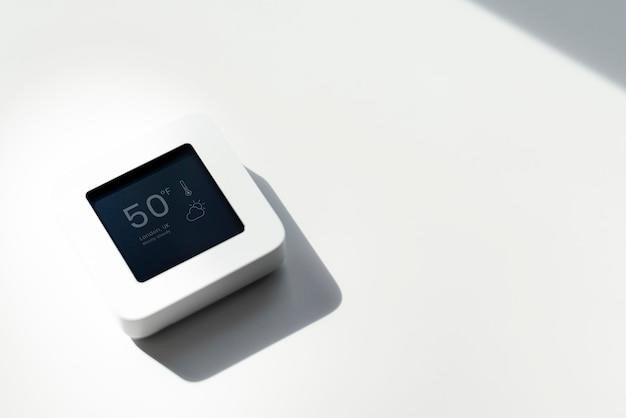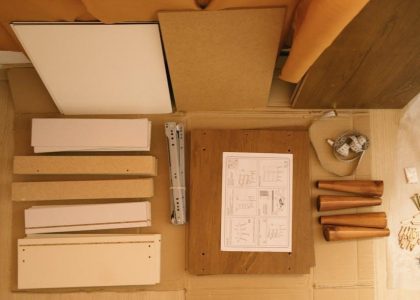Vive Thermostat Manual⁚ A Comprehensive Guide
This manual provides a comprehensive guide to Vive thermostats, covering a wide range of models and features; From installation and wiring to troubleshooting and maintenance, this guide will help you understand and operate your Vive thermostat effectively. Whether you’re a homeowner or a professional technician, this manual will be a valuable resource for maximizing the comfort and energy efficiency of your heating and cooling system.
Introduction
Welcome to the world of Vive thermostats, designed to enhance the comfort and energy efficiency of your home. Vive thermostats are renowned for their user-friendly interfaces, reliable performance, and innovative features that simplify temperature control. This manual serves as your comprehensive guide to understanding and operating your Vive thermostat. Whether you’re a homeowner seeking to optimize your home’s climate or a professional technician installing or servicing these systems, this manual will equip you with the necessary knowledge.

Vive thermostats are crafted with a focus on both user experience and technological advancement. They offer a range of features, including programmable schedules, remote control options, and advanced energy-saving modes. With their intuitive design and clear instructions, Vive thermostats empower you to easily adjust your home’s temperature settings to your specific preferences.
This manual will walk you through the different models, their functionalities, and installation procedures. It will cover essential topics like wiring diagrams, troubleshooting tips, and technician-specific setup instructions. By carefully reading and following the information provided in this manual, you can ensure proper installation, operation, and maintenance of your Vive thermostat.
Vive Thermostat Models
Vive offers a diverse range of thermostats designed to meet the specific needs of various heating and cooling systems. From basic non-programmable models to advanced smart thermostats with Wi-Fi connectivity, Vive provides options for every homeowner. Here’s a brief overview of some popular Vive thermostat models⁚
- Vive Comfort TP-N-701 Non-Programmable Thermostat⁚ This basic thermostat is ideal for simple temperature control without the need for programming. It features a clear display and easy-to-use controls.
- Vive TP-S-721i Smart Thermostat⁚ This advanced thermostat boasts Wi-Fi connectivity, allowing you to control your home’s temperature remotely via a smartphone app. It offers programmable schedules, energy-saving modes, and advanced features like geofencing.
- Vive Comfort TP-P-725 Programmable Thermostat⁚ This model combines programmability with user-friendly features. It allows you to set custom schedules for different days of the week, ensuring optimal comfort and energy efficiency.
- Vive Comfort TP-W150W Wireless Repeater⁚ This device extends the signal range of Vive’s wireless thermostats, enabling reliable communication in larger homes or areas with signal interference.
To ensure compatibility and proper operation, it’s crucial to select the right Vive thermostat model that aligns with your specific heating and cooling system requirements. Refer to the installation manual for detailed information on compatible systems and installation procedures for each model.
Thermostat Application Guide
Vive thermostats are designed for compatibility with a wide range of heating and cooling systems. To ensure proper installation and optimal performance, it’s essential to understand the specific applications of each model. This guide provides a breakdown of common system types and their corresponding Vive thermostat options⁚
- Gas or Oil Heat⁚ Vive thermostats are compatible with gas and oil furnaces, providing reliable temperature control for your heating system.
- Electric Furnace⁚ Vive thermostats can also be used with electric furnaces, offering seamless integration and precise temperature regulation.
- Heat Pump (No Aux. or Emergency Heat)⁚ For heat pump systems without auxiliary or emergency heat, Vive offers dedicated models that provide efficient heating and cooling.
- Heat Pump (With Aux. or Emergency Heat)⁚ Vive thermostats support heat pump systems equipped with auxiliary or emergency heat, ensuring reliable operation during extreme weather conditions;
Consult the individual installation manual for your specific Vive thermostat model to verify compatibility with your existing heating and cooling system. If you have any doubts about the correct application, it’s always best to seek guidance from a qualified HVAC technician.
Installation Tips
Proper installation is crucial for ensuring the functionality and longevity of your Vive thermostat. Here are some essential tips to guide you through the process⁚
- Wall Locations⁚ Select a wall location that is representative of the average room temperature and provides good air circulation. Avoid installing the thermostat in locations near hot or cold air ducts, direct sunlight, behind exterior walls, or in areas that don’t require conditioning.
- Subbase Installation⁚ Carefully align the subbase with the wall, ensuring it is level and securely mounted. The subbase provides a stable foundation for the thermostat and facilitates proper wiring connections.
- Electrical Safety⁚ Always disconnect power to the system before beginning installation. Failure to do so could result in electrical shock or damage to the thermostat.
- Terminal Block Screws⁚ When connecting wires to the terminal block, do not overtighten the screws. Overtightening can damage the terminal block, leading to installation issues and potential system malfunctions.
If you are unsure about any aspect of the installation process, consult a qualified HVAC technician for professional assistance.
Wall Locations
The placement of your Vive thermostat is crucial for accurate temperature readings and efficient system operation. Here’s what you need to consider when choosing the ideal wall location⁚
- Average Temperature⁚ Select an area with average room temperature, avoiding spots near heat sources like fireplaces or drafts from windows or doors. The thermostat should reflect the overall temperature of the space it controls.
- Air Circulation⁚ Choose a location with good air circulation. Avoid areas blocked by furniture or obstructed by airflow from vents or registers. Proper air circulation ensures the thermostat receives accurate temperature readings.
- Avoidance of Obstacles⁚ Do not install the thermostat near hot or cold air ducts, as these can skew temperature readings. Direct sunlight can also influence the thermostat’s accuracy, so choose a location out of direct sunlight.
- Accessibility⁚ Select a location that is easily accessible to users, ensuring they can easily adjust settings and read the display.
By following these guidelines, you can ensure your Vive thermostat is optimally positioned for accurate temperature control.
Subbase Installation
The subbase is the foundation for your Vive thermostat, providing a secure and stable mounting point. Proper installation of the subbase is crucial for both functionality and aesthetics. Here’s a step-by-step guide⁚
- Locate the Subbase⁚ The subbase is usually included with your Vive thermostat package. It’s typically a small, rectangular piece with mounting holes and tabs.
- Prepare the Wall⁚ Use a level to ensure the subbase is mounted straight. Mark the wall with a pencil where the subbase will be installed. Drill pilot holes at the marked locations using a drill bit slightly smaller than the mounting screw size. This will prevent the wall material from cracking during installation.
- Secure the Subbase⁚ Align the subbase with the pilot holes and attach it to the wall using the provided screws. Tighten the screws securely, ensuring the subbase is firmly attached.
- Align the Thermostat⁚ Carefully align the thermostat with the subbase. The thermostat should have tabs that correspond with slots on the subbase. Push the thermostat gently until it snaps into place. Ensure the thermostat is flush against the wall and securely attached.
By following these steps, you can ensure a professional and secure subbase installation, setting the stage for a successful thermostat installation.
Thermostat Quick Reference
This section provides a quick reference guide to the key features and functions of your Vive thermostat. It’s a handy resource for understanding the basic controls and navigating the thermostat’s interface. Whether you need to adjust the temperature, change the fan setting, or access programming options, this quick reference will help you get started.
- Display⁚ The thermostat’s display shows the current temperature, setpoint temperature, and system status (heating, cooling, fan, etc.).
- Temperature Control⁚ Use the up and down buttons to adjust the setpoint temperature. The thermostat will automatically regulate the heating or cooling system to reach the desired temperature.
- Fan Switch⁚ This button controls the fan operation. Choose between “AUTO” for automatic fan operation based on system needs or “ON” for continuous fan operation.
- System Switch⁚ This button selects the heating or cooling mode. Pressing it will cycle through the available options, such as “HEAT,” “COOL,” “AUTO,” or “OFF.”
- Hold Button⁚ This button allows you to temporarily override the programmed settings. Pressing it will temporarily hold the current temperature setting until you manually change it or the hold is released.

This quick reference guide provides a starting point for using your Vive thermostat. For more detailed information and advanced features, refer to the full manual.
Wiring
Proper wiring is crucial for the safe and efficient operation of your Vive thermostat. This section provides guidance on wiring your thermostat correctly, ensuring compatibility with your HVAC system. Refer to the specific wiring diagrams provided in the manual for your particular model. Always disconnect power to the thermostat before working on any wiring.
Typical wiring configurations include⁚
- R (Red)⁚ Provides power to the thermostat.
- W (White)⁚ Controls the heating system.
- G (Green)⁚ Connects to the ground wire.
- Y (Yellow)⁚ Controls the cooling system (heat pump).
- C (Blue)⁚ Provides power to the fan motor.
- O (Orange)⁚ Controls the auxiliary heating system (heat pump).
- W2 (White 2)⁚ Controls the second stage of heating.
- Y2 (Yellow 2)⁚ Controls the second stage of cooling.
For detailed wiring diagrams and specific connections for your thermostat model, please refer to the documentation provided in the user manual. If you are unsure about any wiring, consult a qualified HVAC technician. Incorrect wiring can damage your thermostat or HVAC system, potentially causing electrical hazards.
Wiring Diagrams
Wiring diagrams are essential tools for understanding and correctly connecting your Vive thermostat to your HVAC system. These diagrams visually illustrate the proper connections between thermostat terminals and the corresponding wires in your HVAC system. The user manual for your specific Vive thermostat model will include a set of wiring diagrams tailored to different system configurations.
Each wiring diagram typically shows the following⁚
- Thermostat Terminals⁚ The terminals on the thermostat where you connect the wires.
- System Components⁚ The various components of your HVAC system, such as the furnace, air conditioner, heat pump, and fan.
- Wire Colors⁚ The standard color codes for wires used in HVAC systems.
- Connections⁚ The specific connections between thermostat terminals and system components.
- Notes⁚ Important notes and cautions regarding specific wiring configurations or potential hazards.
Before attempting any wiring, carefully review the wiring diagrams provided in your manual. Ensure you understand the connections and follow them precisely. If you are unsure about any part of the wiring process, consult a qualified HVAC technician.
Technician Setup
The Technician Setup menu on your Vive thermostat provides access to advanced settings and configurations that are typically handled by HVAC professionals. This menu allows technicians to fine-tune the thermostat’s operation to optimize performance for your specific HVAC system and installation.
Here are some common settings that may be found within the Technician Setup menu⁚
- System Type⁚ Selecting the correct system type (e.g., heat pump, conventional system) ensures the thermostat operates correctly with your HVAC system.
- Swing Setting⁚ Adjusting the swing setting (also known as cycle rate or differential) determines the temperature difference between the thermostat’s setpoint and the actual room temperature when the HVAC system turns on or off.
- Compressor Short Cycle Delay⁚ This setting prevents the compressor from turning on too frequently, protecting it from premature wear.
- Emergency Heat Stages⁚ Configuring the number of stages for emergency heat in a heat pump system allows for more precise temperature control.
- Heat Pump Lockout⁚ This setting disables the heat pump when auxiliary heat is activated, ensuring optimal system operation.
- Calibration⁚ This setting allows technicians to adjust the thermostat’s temperature display for greater accuracy;
It is crucial to note that accessing and modifying the Technician Setup menu should only be done by a qualified HVAC technician. Incorrect settings can negatively impact your HVAC system’s performance and potentially void your warranty.





